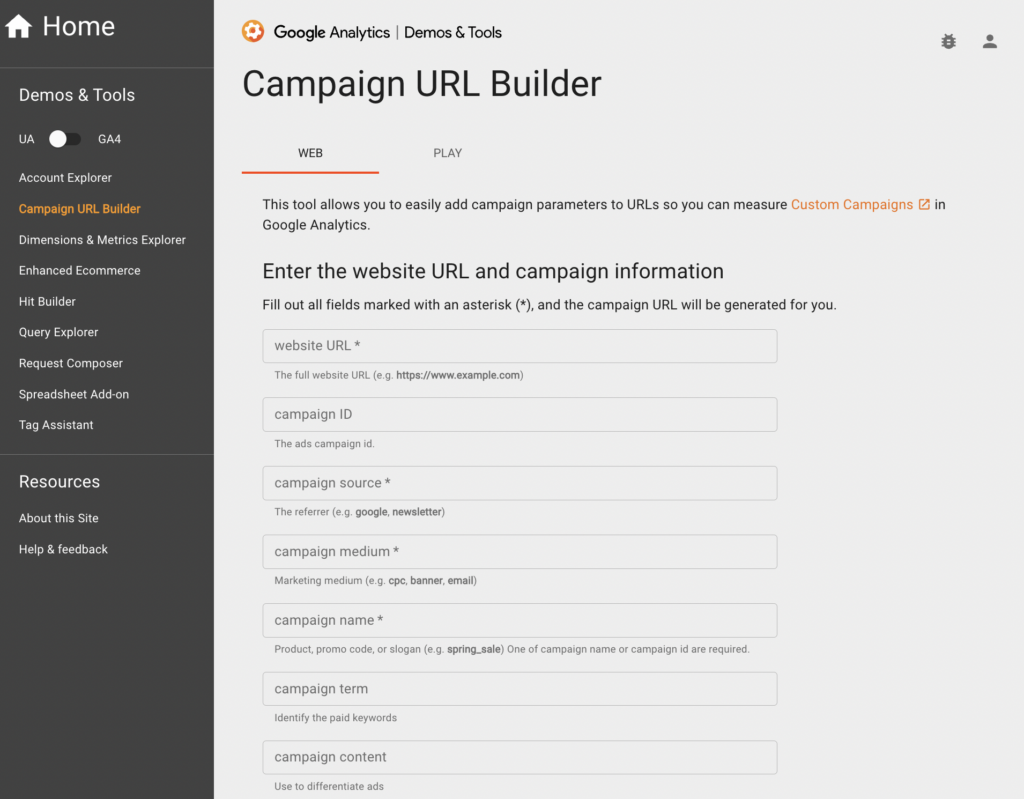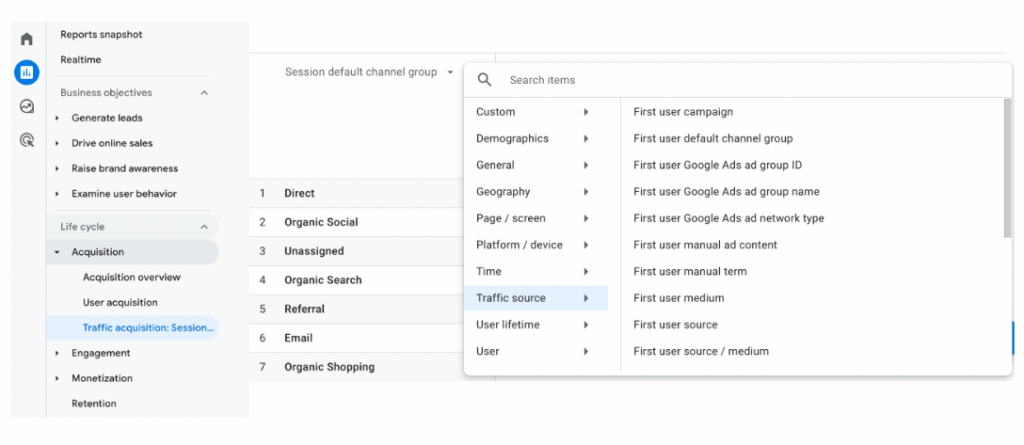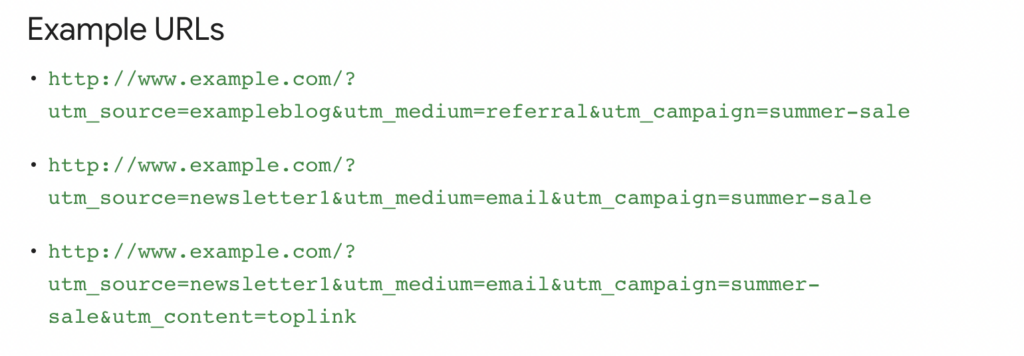In today’s blog post, we’re diving straight into the world of UTM tags—the secret behind tracking your website’s traffic sources and the effectiveness of your marketing campaigns. A while ago, we discussed the key elements of high-converting landing pages, exploring strategies to transform visitors into customers.
But before we continue, let’s address a critical question: Do you know where your website visitors are coming from and how well your marketing efforts are performing?
Well, if you don’t, after reading today’s blog post you certainly will. Get ready to learn everything you need to know about UTM tags and, more importantly, how to improve your current marketing efforts.
What are UTM tags?
Urchin Tracking Module or UTM tags (or parameters) are simply snippets of text you add at the end of your desired URL. A little bit of a background story.
Urchin Software was a privately held software company that specialized in Web analytics. In 2005, Google acquired the company and transformed it into the most used analytics tool – Google Analytics.
The UTM tagging structure has five components, and when creating them, you choose how to name each component based on your campaign naming structure. To get a better idea of it, take a look at the URL examples below.
In general, the UTM structure has five available components. As you can see, our UTM tagging structure has four components, simply because out of the five general components, two of them are optional. But before we explain this in detail, let’s talk about the benefits of using UTM tags.
Why do you need UTM tags?
We all know how tricky it can be to know where all of your traffic is coming from, even with using Google Analytics. The great thing about UTM tags is that when using them, Google Analytics can give you detailed information about where your traffic is coming from and how effective your marketing campaigns are.
For example, if you’re advertising on Facebook and you’re running a variety of ads, you want to be able to know which ad or creative is driving the most traffic.
Another example where UTM tags are crucial is for sources where Google Analytics can’t identify the referrer. Let’s say you want to send a newsletter to your customer list.
What if some of your customers open the email in Outlook? In that case, Google Analytics wouldn’t know that you just clicked on that link, and thus would mark it as a Direct/None source.
Why? Simply because there’s no referral information attached to that. Meaning, that you came from another application – Outlook, which Google Analytics can’t read and thus won’t have information in the HTTP referral.
It’s crucial to put UTMs into your links so you can exactly know where people came from and what they clicked on. These are just some of the benefits you can get from using UTM tags, but all in all, you’ll gain better insights into all of your marketing campaigns.
Now let’s move on to the UTM structure and explain the options of tagging your URLs.
5 components of UTM tags
As we previously said, there are 5 parameters or components of a UTM tag. To start off you need a website URL so you can attach the UTMs.
Both the URLs and UTMs are going to vary based on what your campaign and tracking goals are.
WEBSITE URL
Your site URL
1. Source *
google, facebook, twitter, reddit
2. Medium *
cpc, cpm, social, newsletter
3. Campaign Name *
promo, lead, launch, black-friday
4. Term (optional)
keyword
5. Content
ad set name, creative type
1. ?utm_source=
The campaign source simply tells Google Analytics where the traffic is coming from. Is it from Google, Facebook, Twitter, etc?
So for example, if you’re sharing a blog post link to Twitter or LinkedIn, you can use the name of the social media platform as your source for the UTM tag.
Example: (URL)&utm_source=facebook
From that point, you’ll easily be able to tell from where every visit to this page is and which social media platform is the most engaging one.
2. &utm_medium=
There are a couple of ways to use the medium tag. Again, this depends on your goals and structure, but here are some ideas. For your social media posts, you could simply use the tag (URL)&utm_medium=social.
If you’re doing Google Ads, which operates on a pay-per-click model, you could tag your medium with CPC. The same applies to Facebook ads, where in most cases you pay per impression. In that case, you could tag your medium with CPM.
3. &utm_campaign=
There are many ways to use a campaign tag. If you’re sharing a blog post whose goal is to generate leads, you could tag it with “lead” – (URL)&utm_campaign=lead. You could also tag it with the name of a promotional campaign, such as “black Friday” or “cyber Monday”.
4. &utm_term=
The campaign term is mostly used in two cases:
- To track the paid keywords from your Google Ads campaign
- To identify aspects of your audience in display ad campaigns
Here’s an example if you want to track paid keywords from your Google ads campaign: (URL)&utm_term=analyticsapp
Note: Unlike the source, medium, and campaign name, the term is optional to use when creating a UTM tag.
5. &utm_content=
The content tag is useful for differentiating your ads or links that send traffic to the same URL.
Example: use the name of your ad set as a content tag → (URL)&utm_content=adsetname
Note: Unlike the source, medium, and campaign name, the content tag, as well as the term tag, is optional to use when creating a UTM tag.
So as you can see, with these 5 parameters, you can get detailed in telling Google Analytics exactly where all your traffic is coming from and how your campaigns are performing. But now you’re probably going to ask yourself “How the heck do I build a UTM tag?” so let’s dive in.
How to build a UTM tag?
When building a UTM tag, it’s super important that you don’t misspell something because making even the slightest error could mean Google Analytics won’t track your campaigns correctly or at all. So the key is to standardize your UTMs to keep all the data clean, useful, and consistent.
The good news though, is that you can build your UTMs both manually and with the help of a tool. Google has its free tool which allows you to easily attach UTMs to your URLs. This way, you don’t have to worry about the spacing and structure.

The process is pretty straightforward. Once you fill out the required fields in the form, click submit, and you’re all done. You’ll get the fully tagged link that you can copy and use.
If you’ve worked with UTM tags before you know that it’s super important how you tagged the link because you want to be able to drill through all the traffic reports.
This campaign builder is fine when you have one or two links that you send out, but if you have multiple campaigns running, and multiple links you use, you need to have a methodology with your structure.
UTM tracking in Google Analytics
Now that you know how to build UTM tags, let’s see how to analyze your links and traffic data in Google Analytics 4.
First, head over to the Acquisition part in the left Reports tab and select Traffic Acquisition: Session default channel group. You can check your UTMs through Channels, Source/Medium, or Campaigns.

You can then see a bunch of things such as which of these campaigns led to the greatest number of visitors, who the most engaged visitors are or who the lowest bounce rate visitors are, etc.
To check out the Source/Medium just click on the desired campaign. You could also add a secondary dimension such as a keyword or ad content to analyze, on a deeper level, what’s driving conversions to your website.
UTM Tags and Attribution Problem
At the end of this blog post, let’s discuss the attribution problems and how UTM tags help you with attribution. With the advent of iOS 14 and its heightened focus on user privacy, tracking user behavior and accurately attributing conversions has grown more complex.
However, UTM tags come to the rescue with their simplicity and precision.
UTM tags, the focus of our discussion today, can be a lifeline in this scenario. Here’s how they can be your solution to attribution challenges:
Attribution Challenges
Solution
Granular Tracking
By adding UTM parameters to your marketing links, such as source, medium, campaign, and content, you can precisely identify where your website traffic originates.
Data Integrity
In the face of privacy restrictions, UTM tags preserve the integrity of your data. While user-level information might be limited, UTM tags provide insights at the campaign and source level, helping you discern which channels and campaigns are truly effective.
Cross-Device Tracking
UTM tags bridge the gap when it comes to cross-device tracking. Whether a user interacts with your campaign on one device and converts on another, UTM parameters ensure the conversion is attributed correctly to the source.
Informed Campaign Optimization
Employing UTM tags to track campaign performance allows you to make informed decisions. Adapt your marketing strategies based on the performance of specific campaigns, sources, or mediums, all while navigating the challenges posed by limited user data.
Customized Reporting
UTM tags seamlessly integrate with analytics tools like Google Analytics, enabling you to craft custom reports that provide insights into how your marketing efforts impact various channels.
Summing Up
UTM tags are an important and inevitable part of digital marketing. Implementing them will make your job of analyzing online marketing campaigns easier and more effective.
If you have any questions about this topic or your Google Analytics data, feel free to drop us a line at [email protected]. We are always happy to share useful advice and discuss the best ways of analyzing your data.




